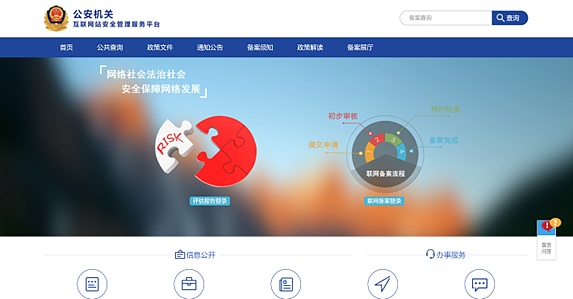New action from Cyber Administration of China: Algorithm filing for every AIGC platform is at stake
New requirement from Cyber Administration of China: Algorithm filing now mandatory for all AIGC platforms.Core summary
On June 20, 2023, the National Internet Information Office released the first batch of deep synthesis algorithm record lists in China, and many leading companies and AIGC industry pioneers successfully made the list. This is not only a crucial step in the risk governance of Chinese algorithms and artificial intelligence, but also a significant breakthrough in AIGC industry compliance.
Today, the Sajie team will explain in detail what is the deep synthesis algorithm record, and when the AIGC industry needs to be recorded, how to file and other issues.
1. What is the deep synthesis algorithm record?
- Do you really understand Uniswap v4?
- Vitalik: In-depth Understanding of Cross-L2 Reading – What are the Cross-Chain Proof Solutions
- Why DeFi is Broken: The Importance of Non-Oracle Protocols
So far, there are two specialized legislations for AIGC tools in China, both of which are formulated and published by the National Internet Information Office:
1. “Regulations on the Management of Deep Synthesis of Internet Information Services” (hereinafter referred to as “Deep Synthesis Regulations”); ;
2. “Administrative Measures for Generative Artificial Intelligence Services (Draft for Solicitation of Comments)” (hereinafter referred to as the “Management Measures Draft”)
Due to the strong guidance or inducement ability of AIGC itself, combined with the characteristics of fast transmission speed and wide transmission surface of information network technology, AIGC content is likely to achieve viral spread in a short period of time, such as a case not long ago where a self-media platform used ChatGPT to create fake news and widely spread it to attract traffic and influence public opinion in some areas. It has already clearly shown us the risk of AIGC tools themselves as a kind of public opinion guidance tool or fraudulent tool. Based on this characteristic, the regulatory authorities in our country have given AIGC companies the obligation to record their own algorithms based on the long-term harmony and stability of maintaining social public order and interests.

Then, first of all, we need to understand what the so-called deep synthesis technology refers to. According to Article 23 of the “Deep Synthesis Regulations”, deep synthesis technology refers to the technology of using deep learning, virtual reality and other generative synthesis algorithms to produce network information such as text, images, audio, video, virtual scenes, etc., including but not limited to:
(1) Technology for generating or editing text content such as chapter generation, text style conversion, question and answer dialogue, etc.;
(2) Technologies for generating or editing speech content, converting text to speech, and editing speech attributes;
(3) Technologies for generating or editing non-speech content, such as music generation and scene sound editing;
(4) Technologies for generating or editing biological features in image and video content, such as face generation, face replacement, character attribute editing, face manipulation, and posture manipulation;
(5) Technologies for generating or editing non-biological features in image and video content, such as image generation, image enhancement, and image restoration;
(6) Technologies for generating or editing digital characters and virtual scenes, such as 3D reconstruction and digital simulation.
In addition to these six types of applications, according to Article 6 of the Draft Regulations: Before providing services to the public using generative AI products, security assessments shall be submitted to the National Cyberspace Administration in accordance with the Regulations on Security Assessments for Internet Information Services with Public Opinion Attributes or Mobilization Capabilities, and algorithm filing and change, revocation filing procedures shall be fulfilled in accordance with the Regulations on the Management of Internet Information Service Algorithm Recommendations.
Therefore, after the Draft Regulations take effect, if this provision does not undergo major changes, we should also include “text, images, sound, video, code, and other content generated by algorithms, models, or rules” in the category of “deep synthesis technologies” according to Article 2 of the Regulations.
2. Which deep synthesis technology algorithms need to be filed?
The Saje team reminds us that not all deep synthesis technologies require their service providers to register for filing. Under the guidance of the principle of technological neutrality, only deep synthesis technology service providers that meet specific conditions need to file their algorithms.
Specifically, the AIGC industry for deep synthesis algorithm filing is mainly concentrated in the scope of “deep synthesis service providers with public opinion attributes or mobilization capabilities” stipulated in Article 19 of the Regulations on Deep Synthesis. However, in practice, the definition standard of “with public opinion attributes or mobilization capabilities” is relatively vague.
According to Article 2 of the Regulations on Security Assessments for Internet Information Services with Public Opinion Attributes or Mobilization Capabilities, Internet information services with public opinion attributes or mobilization capabilities include the following situations:
(1) Launching forums, blogs, microblogs, chat rooms, communication groups, public accounts, short videos, live broadcasts, information sharing, mini-programs and other information services or setting up corresponding functions;
(2) Launching other internet information services that provide public opinion expression channels or have the ability to mobilize the public to engage in specific activities.
Strictly speaking, AIGC does not belong to any of the services provided by the service providers in the first paragraph above, and most of the AIGC do not currently consider themselves only as a social media platform. Personally, the Sa team believes that from the perspective of substantive regulation, it probably meets the “public opinion expression channel or other internet information services that have the ability to mobilize the public to engage in specific activities” mentioned in the bottom line clause.
Therefore, from this perspective, the service providers in almost all the AIGC industry tracks may be involved in deep synthesis algorithm filing, including but not limited to text generation, image generation, video generation, audio generation, etc. The most important judgment criterion is the degree of openness of the user group. If the service provider provides services to the general public, it is basically within the scope of the “Deep Synthesis Regulations”.
(3) How to carry out deep synthesis algorithm filing
Firstly, the filing method is online filing. According to the requirements of the “Internet Information Service Security Assessment Regulations with Public Opinion Attributes or Social Mobilization Capabilities”, service providers that meet the filing requirements should file on the security management service platform (address: http://www.beian.gov.cn/).

During the filing process, the most important document that affects the success rate of the filing is the “Assessment Report” submitted by the deep synthesis service provider. If the deep synthesis service provider and the technical supporter provide models, templates and other tools with two specific functions, they must provide the “Assessment Report” self-assessment or commissioned by a professional organization after a security assessment:
1. Generating or editing biometric information such as faces and voices;
2. Generating or editing non-biometric information such as special objects and scenes that may involve national security, national image, national interests, and public interests.
Due to the sensitive nature of the two types of services mentioned above, the evaluation of specific content should be based on the basic evaluation dimensions and supplemented with evaluation standards that conform to the “Personal Information Protection Law”, “National Security Law” and “Data Security Law”.
Generally speaking, there are seven evaluation standards:
(1) The establishment of security management officials, information auditors, and security management agencies;
(2) Measures for verifying the real identity of users and retaining registration information;
(3) Measures for retaining log information such as user account, operation time, operation type, network source address and target address, network source port, client hardware characteristics, and user-published information records;
(4) Measures for preventing and disposing of illegal and harmful information in user account and communication group names, nicknames, introductions, remarks, and identification, as well as in information release, forwarding, commenting, and communication group functions, and related record keeping measures;
(5) Technical measures for personal information protection and prevention of the spread of illegal and harmful information, and the risk of loss of control of social mobilization functions;
(6) Establish a complaint and reporting system, publish information such as the complaint and reporting methods, and promptly accept and handle complaints and reports;
(7) Establish a work mechanism for providing technical and data support and assistance to regulatory and law enforcement departments in performing their duties in accordance with the law.
Finally
The deep synthesis filing system is an important innovation and breakthrough in the risk management of artificial intelligence and algorithms in China. The AIGC industry is advised to conduct algorithm security evaluations and deep synthesis algorithm filings under the consultation of professional compliance personnel.
We will continue to update Blocking; if you have any questions or suggestions, please contact us!
Was this article helpful?
93 out of 132 found this helpful
Related articles
- CoinEx fined $1.7 million and reached a settlement with the New York State Attorney General’s Office (NYAG)
- Evolution of Uniswap: Opportunities and Impacts of V4
- What is Binance Chain’s Layer 2 network opBNB? Binance’s official interpretation
- Encrypted Exchange “Moving Trend”: US SEC “Forced Eviction” Middle East and Hong Kong “Welcoming with Smiling Faces”
- zkSync Dex Showdown: Syncswap vs iZiswap
- Comparison of the performance of Optimism and Arbitrum in the past three months
- Understanding DeFi Protocols Without Oracle





